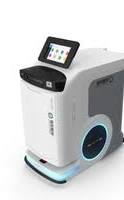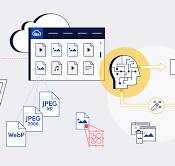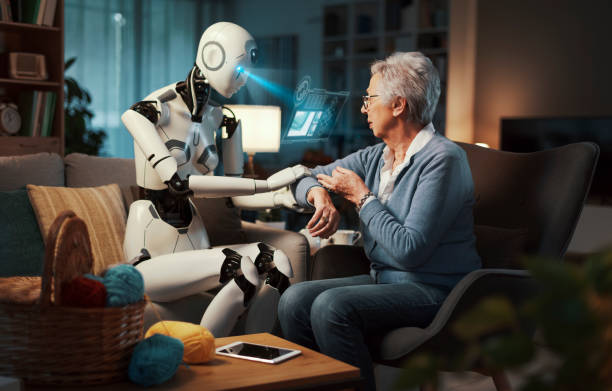
As automation becomes increasingly integrated into daily life, many elderly individuals are facing challenges. How are they adapting to a world where personal interactions are gradually fading?
Introduction: The Rise of Automation in Daily Life
In the fast-paced, technology-driven world of today, automation has revolutionized nearly every aspect of our daily lives. From self-checkout lanes at grocery stores to virtual assistants like Siri and Alexa, many tasks that once required human interaction have now been replaced with automated systems. While this shift has certainly made life more convenient for many, it has also introduced significant challenges for one group in particular: the elderly.
For many older adults, the shift from a world filled with human interaction to one dominated by technology and automation can be overwhelming. What was once a simple task of speaking with a cashier, making an appointment by phone, or receiving assistance in person, has transformed into a maze of online forms, digital interfaces, and automated systems. As this change continues, the human touch that was once integral to daily life is disappearing, leaving many elders struggling to keep up.
The Digital Divide: How Technology Excludes the Elderly
One of the most significant barriers for older adults in a world dominated by automation is the digital divide. While younger generations have grown up with technology and often take it for granted, many elders did not have the same exposure to digital tools during their formative years. For those who didn’t work in tech-related fields or use computers regularly, the rapid evolution of digital platforms can seem like an insurmountable challenge.
From booking a doctor’s appointment to paying bills online, elders are often left behind in a world where so many services and systems now require digital literacy. For them, accessing services that are second nature to younger generations is not always possible. A seemingly simple task like checking the status of a package or making an online grocery order becomes a daunting endeavor.
Furthermore, many of the automated systems used today don’t account for the fact that not all elders are familiar with or comfortable navigating digital interfaces. As a result, older adults often feel excluded from basic services or isolated in situations where personal contact was once available.
The Emotional Toll of Automation on Elders
It’s not just the practical challenges of automation that impact elders—it’s also the emotional toll. Many older individuals have spent their lives interacting with others face-to-face, whether it’s through conversations with a cashier or having a chat with a neighbor. These interactions were not just practical but also social, providing an opportunity for connection and emotional well-being.
With the rise of automation, these human interactions are becoming fewer and further between. As machines and algorithms replace human workers, elders may find themselves feeling more isolated and disconnected from the world around
them. The absence of a familiar face, the lack of a warm greeting, or the inability to ask a question in person can lead to feelings of loneliness and frustration. For those who are already facing social isolation, automation can only deepen the sense of disconnection.
In addition, the increasing reliance on machines can create a sense of helplessness. The frustration of not being able to navigate a website, get the right answers from an automated system, or solve a problem without a human to turn to can erode an elder’s sense of independence and self-worth. What was once a straightforward process now feels alien and complicated, contributing to feelings of inadequacy and anxiety.
The Struggle for Independence: When Automation Replaces Human Help
For many elderly individuals, maintaining independence is a crucial part of aging with dignity. Being able to manage personal tasks, such as grocery shopping, medical appointments, or managing finances, is often tied to their sense of self-reliance. However, the increasing prevalence of automated systems and digital platforms makes it harder for them to maintain that independence.

Take the example of grocery shopping. For younger people, using a self-checkout machine is a quick, easy process. But for elders, the complexity of these systems—often compounded by unclear instructions, unfamiliar interfaces, or a lack of assistance—can be daunting. For those who have difficulty reading small print, using touchscreens, or understanding automated prompts, these self-service machines can be more of an obstacle than a convenience.
The same challenges arise in other areas of life. Medical appointments are increasingly scheduled online or via apps, but many older adults struggle with these digital systems, leading to missed appointments or confusion. Similarly, many banks and financial institutions have switched to fully automated services, meaning elders may find themselves standing in long lines for assistance or unable to access the help they need in a timely manner.
The human touch—the comforting presence of someone who can explain a process, offer guidance, or simply listen—is being replaced by machines that don’t understand the personal nuances of each situation. This loss of human interaction has far-reaching effects on older adults, who often require more personalized assistance than the digital systems can offer.
Automation’s Role in Healthcare: A Double-Edged Sword
Healthcare is one of the most vital areas where automation has made a noticeable impact. Medical records are now stored digitally, prescriptions are often filled online, and doctor-patient consultations can sometimes be replaced by virtual appointments. While these advancements have made healthcare more efficient, they’ve also created a barrier for many elderly patients who are less familiar with digital tools.
Telemedicine, for example, is becoming increasingly popular, but not all elderly individuals are equipped to handle video calls or use the necessary technology. The shift toward electronic health records has also left many seniors struggling to navigate a system they didn’t grow up with. For those who have spent years building relationships with their doctors and healthcare providers, these automated systems may feel impersonal and intimidating.Moreover, automated health reminders and prescription refill systems can be frustrating for elders who prefer the direct approach of speaking with someone on the phone or in person. The technology, while helpful for some, has left others feeling overwhelmed, as it strips away the face-to-face connection they once had with healthcare providers. For elders with complex medical needs, relying solely on automation can create a sense of vulnerability and fear that their needs might not be met properly.
Finding a Balance: The Need for Human Interaction in an Automated World
As automation continues to grow, the challenge lies in finding a balance between efficiency and human connection. Automation should not replace the human touch altogether. While automated systems can streamline certain processes and offer convenience, it’s crucial to ensure that older adults are not left behind or marginalized by these advancements.
One solution is to provide greater access to technology education for older generations, helping them develop the digital skills needed to navigate the new world around them. Additionally, it’s important to design automated systems that are more user-friendly and accessible, particularly for those with limited technological experience. Elder-friendly interfaces that prioritize simplicity, clarity, and ease of use could make a significant difference.Another potential solution is to maintain human presence in essential services. Businesses and healthcare providers should continue offering in-person assistance, ensuring that older adults have a human to turn to when they encounter difficulties. Balancing the convenience of automation with the empathy and understanding of human interaction is key to supporting our aging population.
Conclusion: Preserving the Human Touch in an Automated World
While automation offers undeniable benefits in terms of efficiency and convenience, it also poses challenges for the elderly, who often feel disconnected, overwhelmed, or excluded. As technology continues to advance, it’s important to remember the value of human interaction and to ensure that our elders are not left behind in the digital divide.
By embracing technology that supports and enhances human interaction—rather than replacing it—we can create a future where elders can navigate an automated world with ease, confidence, and a sense of belonging. In this ever-evolving digital age, the human touch is not just a luxury; it’s a necessity.
Q&A: Elders and the Struggle with Automation
Q1: How has automation impacted the daily lives of older adults?
A1: Automation has made everyday tasks more difficult for older adults, as many automated systems require technological literacy. This has left them feeling disconnected, frustrated, and excluded from essential services.
Q2: Why are many elderly individuals struggling with healthcare automation?
A2: Elderly individuals often find it challenging to adapt to telemedicine, digital health records, and automated appointment scheduling systems, which can feel impersonal and overwhelming without the direct, personal care they are used to.
Q3: What role does human interaction play in elderly well-being?
A3: Human interaction provides emotional support and reassurance, helping older adults feel more connected and valued. The loss of face-to-face communication due to automation can lead to feelings of loneliness and frustration.
Q4: How can technology be made more accessible to elderly individuals?
A4: By offering digital literacy programs for older adults and designing user-friendly interfaces that prioritize simplicity and clarity, we can help them adapt to the digital world while still maintaining their independence.
Q5: What is the best way to balance automation and human interaction for the elderly?
A5: Ensuring that essential services offer both automated systems and human support can create a balanced approach. Additionally, keeping personal, in-person connections in healthcare and daily interactions is crucial for elder well-being.
